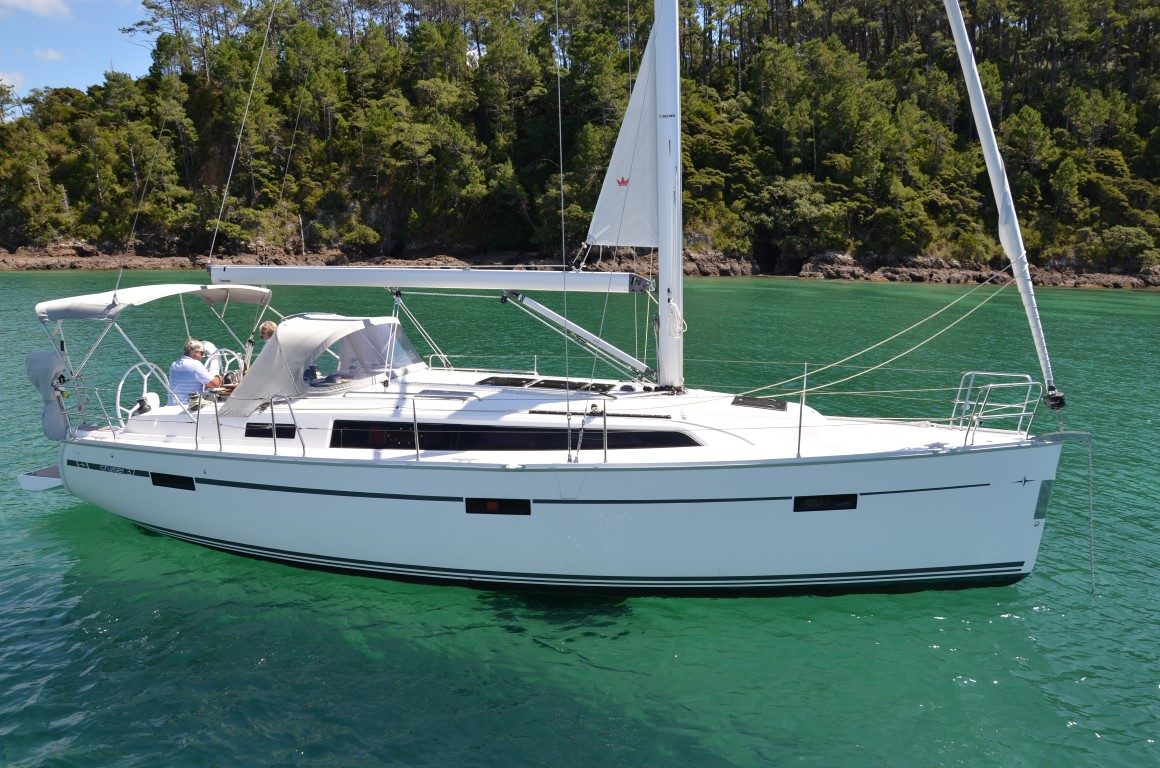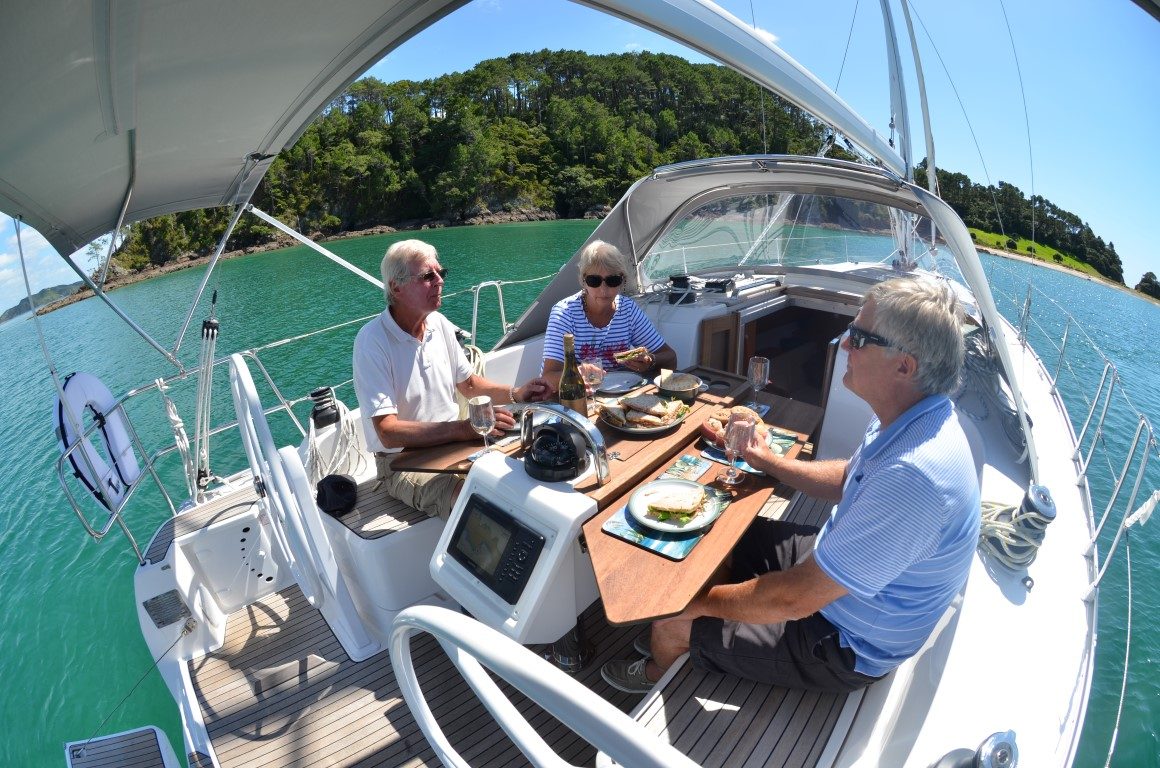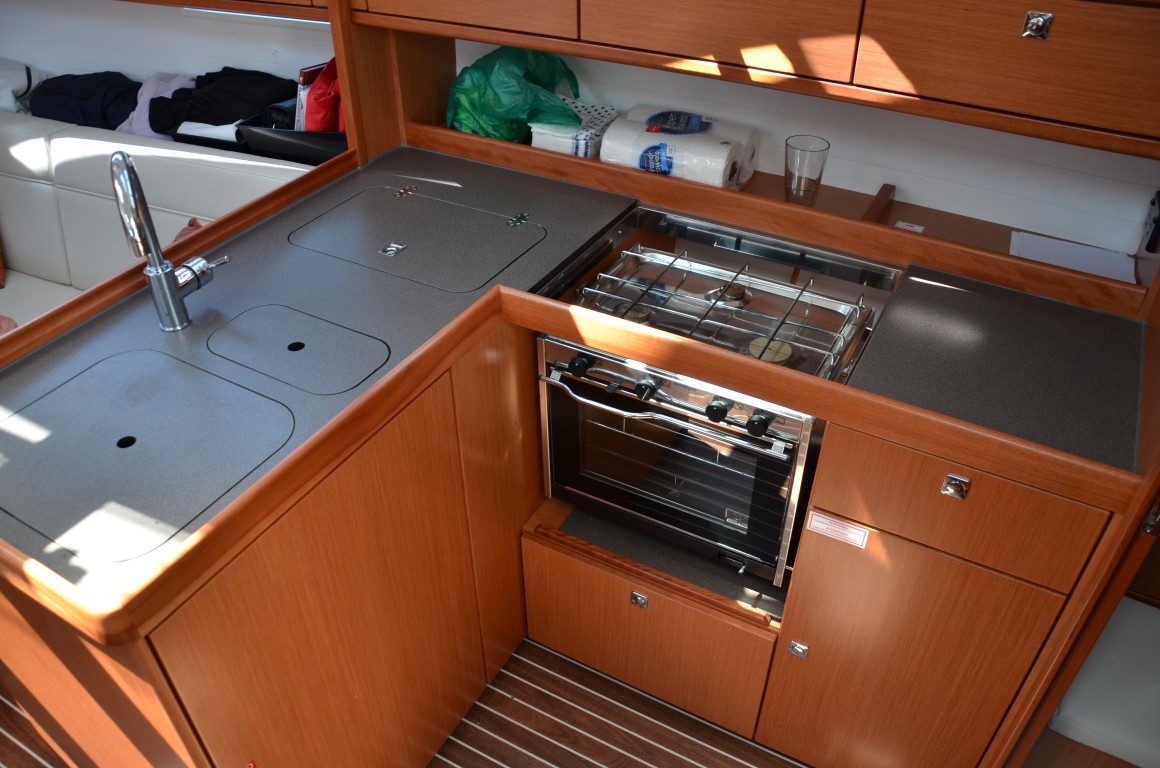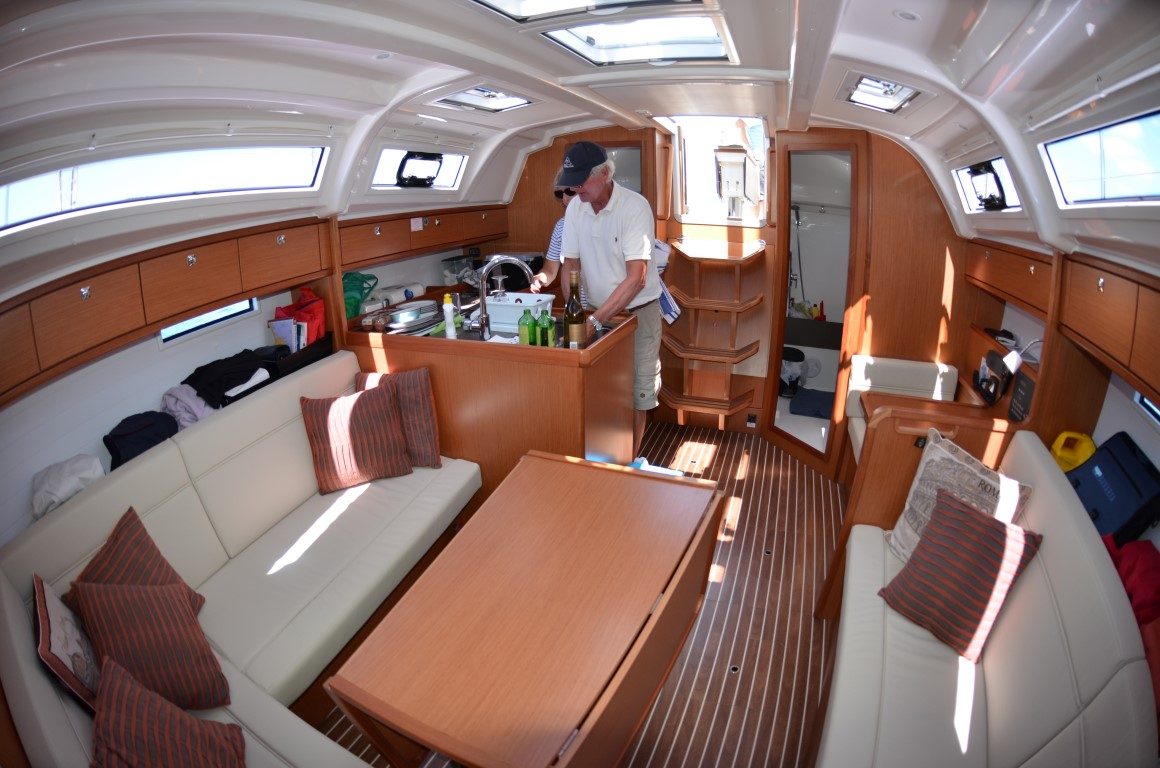‘Behemoth’ is a word which springs to mind or, perhaps more nautically, ‘leviathan’.

When you migrate to the Bay of Islands for six months of the year to escape the UK winter, having a decent yacht to make the most of the sailing playground is an added bonus.
The name of this Bavaria 37 Cruiser – Swallows II – perfectly captures her owners’ lifestyle. It alludes to their migratory existence, following the sun. Six months in each hemisphere equates to perpetual summer, and for much of the time she is their home down under.
Like her avian namesake, the 37 is a nippy, streamlined cruiser, easy on the eye, quick and exceptionally easy to sail. She’s an inspired choice for a couple intent not simply on enjoying the jewel that is the Bay of Islands – but doing so in stylish comfort.

Swallows II is an upgrade for the couple: her predecessor – Swallows – is a Bavaria 32. The owners are relatively new to sailing and, having cut their teeth on the 32 wanted something a little more adventurous and spacious. They swapped her for the 37 late last year and the consensus is – well, “nirvana” is not too strong a word. An ideal step-up.
The 37’s also an upgrade for Bavaria. Like many models in the German manufacturer’s range, the 37 is a replacement for an earlier generation boat – the 36 Cruiser. The switch came in late 2014 – another building block in Bavaria’s fleet revamp.
And there are a number of changes. Chief among them is the cockpit and the introduction of twin helms versus the 36’s single wheel – a switch that creates a more spacious, user-friendly cockpit and a much easier “flow” through to the large fold-down swim platform.

Another obvious change is to the portlights along the sides of the coachroof. The 36’s individual, square models have been swapped for long, continuous windows. They not only enhance the 37’s sweet lines but also offer a significant improvement downstairs. There is far more natural light – presenting a bright interior and accentuating the interior’s sense of space.
This is not to suggest the 36 was unpleasant (indeed, Bavaria produced more than 350 of them). For me, though, the 37 is cleaner and more elegant – with a much more modern, European styling. Like the 36, the 37 is from the drawing board of Farr Yacht Design in the US – Bavaria’s long-time design company.
Easy handling
Given her role as a summer getaway, Swallows II has been set up for fuss-free sailing. The owners are cruisers – not adrenalin junkies – and like to arrive, stock up with supplies, step aboard and depart. They tend to sail as a couple most of the time – so keeping sail and boat handling controls simple was a dominant philosophy during specification.
Obvious examples are the in-mast furling system and the bow thruster. The laminated Elvstrom sails are above the standard spec, and the main – with its vertical battens – slips into the mast very smoothly. The bow thruster’s particularly useful when the wind becomes mischievous at the Dove’s Bay Marina in Kerikeri, helping to guide Swallow II into her nest.
And though they are relatively inexperienced sailors, they realise that there will come a time when they will want to have a little more adrenalin coursing through their veins – a gennaker is on a future shopping list. Which is why they’ve specified an extra set of winches on the combing – adding up to six around the cockpit.
This configuration has some added benefits for short-handed sailing. Sail controls are standard – with the double-ended main sheet, jib halyard, main outhaul/inhaul and vang running through jammers to the two coachroof winches either side of the companionway.
But when you’re short-handed, it’s easy to run some of those sheets/line to one of the additional winches on the combing. In effect, you’re able to trim without moving very far from the helms. And while the 37 doesn’t have a mainsheet traveler, the double-ended system provides plenty of tweaking opportunity to flatten the main. Further tweaks are possible with the adjustable backstay.

Of course, when the Garmin autopilot is engaged, trimming becomes a much more leisurely, civilised affair – and there is plenty of room in the 37’s revamped cockpit for flexing your winch-grinder muscles.
Accommodation
The 37 is available in a two- or three-cabin layout. Swallows II is a two-cabin version. Sleeping accommodation is split between a large forepeak with its V-berth double, and a starboard cabin aft, under the cockpit. The aft cabin’s double berth is particularly spacious. There’s a single bathroom – to port – with a pull-out shower.
The three-cabin 37 has a mirror aft cabin to port. The advantage of the two-cabin boat, though, is its cavernous cockpit port locker – easily able to accommodate the deflated tender. In the three-cabin version that locker is a lot smaller.
It’s a relatively traditional layout, but as suggested the additional ambient light promotes the sense of space. The appeal of the boat, say the owners, is her ability to be sailed by a couple, yet provide sufficient room for entertaining a party of eight in comfort and style.
The saloon table – with its twin leaves – will certainly host the guests in comfort. I like the suite of drawers built into the table base – convenient access to essentials such as the bottle opener. And in anticipation of wild, wine-fuelled parties around the Bay of Islands’ anchorages, the owners specified a slightly bigger cooker in the galley. It’s a three-burner gimbaled model with an oven below.

Overall, it’s a decent-sized, L-shaped galley, with generous bench tops easily expanded by fill-in covers over the two sinks and the cooker. A top-loading fridge-freezer is set into the bench top. Opposite, to port, is the midships nav station. If you’re tired of the Garmin dictating the navigation, you can opt to explore your route on a paper chart – the nav station is roomy and very comfortable.
Performance
We didn’t have too much wind during our sail, but my dominant impression of the 37’s performance was the lightness of her helms. They’re carbon fibre wheels and with the Jefa steering Swallow II flits along and tacks effortlessly.
And for a cruiser she’s not too shabby on the speed front. Close-hauled in 10 – 12 knots of wind we breasted seven knots on occasion – she certainly hums along effortlessly in the six knot range. And with the genoa tracks mounted well inboard, the 37 delivers respectable upwind performance.
She’s a relatively modest displacement yacht – seven tonnes (light), with a 2,080kg bulb on the end of a 1.95m keel (a heavier, shallow draught option – 1.63m – is available. Upwind sail area is 65m2. Her 30hp Volvo drives a folding Kiwi prop and delivers a cruising speed of around seven knots at 2,500 rpm.

Swallow II is perfectly aligned to her owners’ needs – both in terms of their sailing experience/expectations as well as her suitability for their cruising aspirations. She has a spacious, airy, well-presented interior with well-designed sail controls for simple handling.
I only have one niggling thought: having spent six months sailing around the Bay of Islands, would you really want to go back to the UK – even for its summer?
Construction
Strength, integrity and longevity in the Bavaria build comes from the use of Isophthalic acid (IPA) resins in the outer layers, used during the laminating process. These offer effective protection against osmosis. Hull and deck use sandwich construction with foam inserts. Where fittings are mounted, the deck is reinforced with aluminium sheets. In the so-called “marrying” process shortly before the end of production, the deck and hull are screwed and glued together for stability and durability.
/>
‘Behemoth’ is a word which springs to mind or, perhaps more nautically, ‘leviathan’.
White Pointer has earned the respect of discerning customers in New Zealand and Australia, attracting a loyal and ever growing following for its high-quality, rugged and totally dependable aluminium trailer boats.
The hardtop SP635 shares the same underpinnings as the popular SF 635 which was a completely new model back in 2020.
The pride and joy of a multi-generational family, Bliss resides on a pier that’s home to a couple of other Elite motor launches – Sandspit Marina is a hot-spot for the Bill Upfold-designed vessels, with several calling this small marina home.